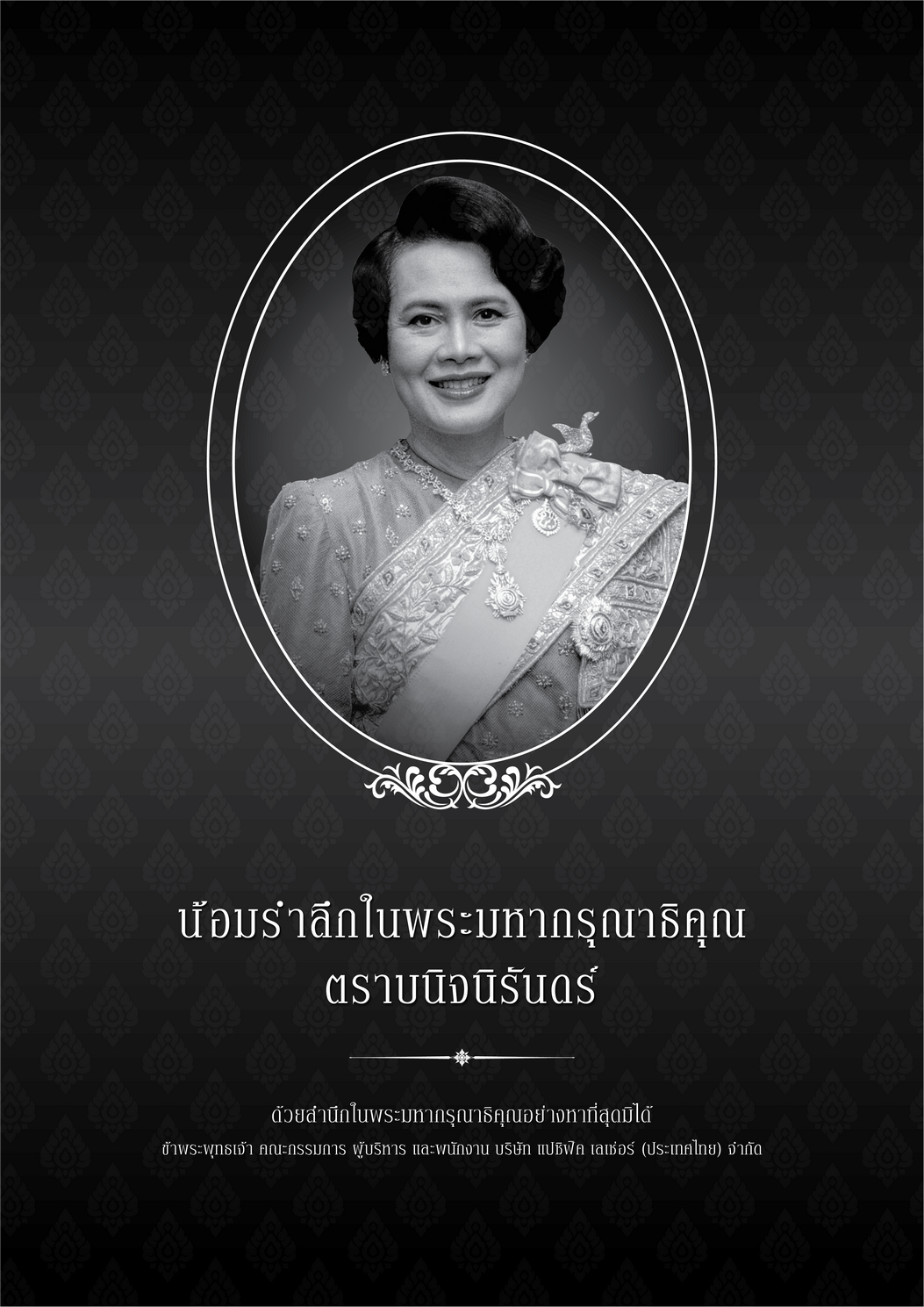
Strolling Along Boripat Road A Hidden Gem in Bangkok
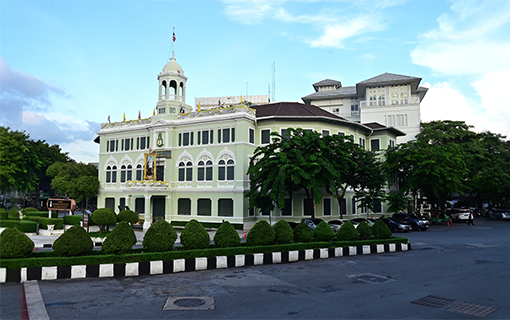
King Prajadhipok Museum at the Start of Boripat Road : Located at the beginning of Boripat Road, this museum offers visitors a glimpse into the life and legacy of King Prajadhipok, bridging the past with the present.
Boripat Road may not be as famous as some of Bangkok's other thoroughfares, but this charming street, stretching across the city, offers a unique journey through history, local culture, and Buddhist traditions. Starting from Damrong Rak Road near King Prajadhipok Museum, the road cuts across the city and ends at the Damrong Sthit Bridge.

Graffiti on the Wall by Damrong Sthit Bridge : The vibrant graffiti on the side of a building next to Damrong Sthit Bridge marks the starting point of the Boripat Road walking tour, easily accessible from MRT Sam Yot Station.

Old Commercial Buildings on Boripat Road : A row of aged commercial buildings, their wooden facades weathered by time, stand proudly along Boripat Road, preserving the street's historical charm.
If you’re coming from Sam Yot MRT Station, I recommend starting at the Damrong Sthit Bridge and walking toward King Prajadhipok Museum. The journey is easily accessible by metro, and once you reach the museum, you can continue your exploration on Ratchadamnoen Road. Interestingly, Boripat Road was named in honor of Prince Boriphat Sukhumphan, a key figure in Thai history and the son of King Chulalongkorn.
What to Discover on Boripat Road?
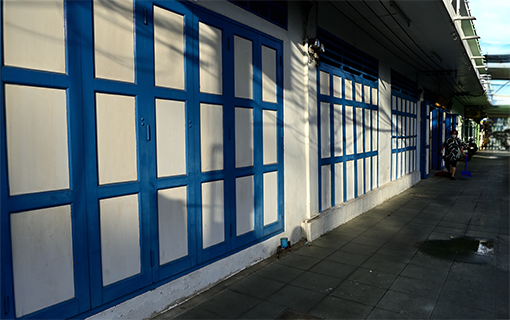
Half-Brick, Half-Wood Structure at the Intersection of Boripat and Bamrung Muang Roads : An ancient building, with its bottom half made of brick and its top half-constructed from wood, sits at the busy intersection of Boripat and Bamrung Muang Roads, a testament to Bangkok's architectural evolution.
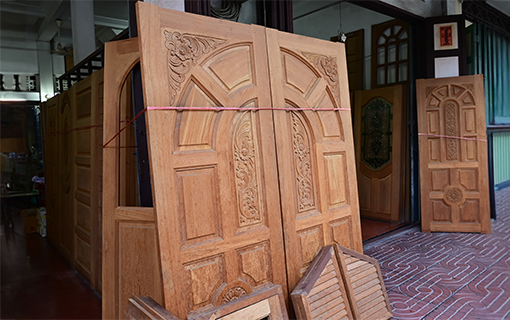
Teak Wood Door and Window Shop on Boripat Road : A rare sight these days, this family-run shop on Boripat Road continues to produce and sell teak wood doors and windows, showcasing exquisite craftsmanship.
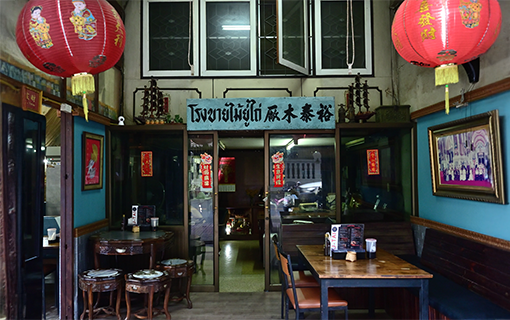
Old Wooden Shop Converted Into a Restaurant : This former timber store along Boripat Road has found new life as a cozy eatery, blending the street's old-world charm with modern dining experiences.
Boripat Road runs parallel to the ancient Khlong (canal) Rong Krung, once a lifeline for commerce in the city. It’s no surprise that the street is home to a blend of old wooden and brick shop houses. These businesses have thrived for generations, catering primarily to trade. As you stroll from Damrong Sthit Bridge toward Mahanak Canal, you’ll encounter everything from delicious local eateries to automotive parts shops.

Commercial Buildings at the Boripat and Bamrung Muang Intersection : A lively junction where Boripat Road meets Bamrung Muang, with rows of traditional shop houses that have seen generations of local businesses thrive.
One highlight is the Ban Bat community, renowned for its centuries-old craft of making alms bowls for monks. This traditional trade has been passed down through generations, and visitors can witness artisans meticulously crafting these sacred items. Closer to Wat Saket, you’ll find a wood-selling community, adding yet another layer to the street’s diverse character.
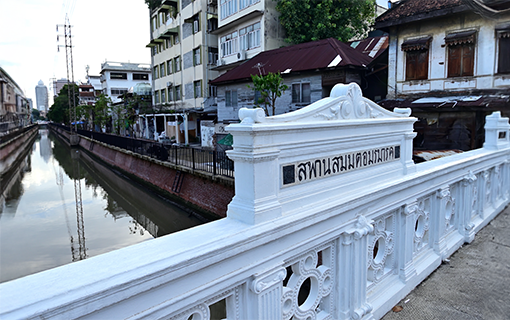
Sammat Amornmarak Bridge : Known for having one of the trickiest names to pronounce, Sammat Amornmarak Bridge spans Khlong Rong Krung, adding a sense of history to the bustling city below.

Mahatthai Uthit Bridge : An iconic landmark on Boripat Road, Mahatthai Uthit Bridge is a reminder of Bangkok's history, carrying both people and stories across Mahanak Canal.

The Weeping Sculpture on Mahatthai Uthit Bridge : The famous "weeping" sculpture on Mahatthai Uthit Bridge commemorates a deep sense of mourning, earning it the nickname "The Weeping Bridge."
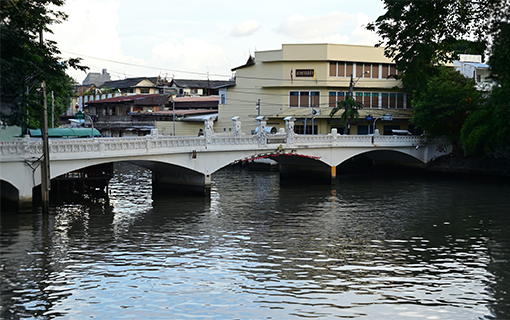
Mahatthai Uthit Bridge Viewed from Phan Fa Bridge : A serene view of Mahatthai Uthit Bridge from Phan Fa Bridge, where Khlong Rong Krung meets Khlong Mahanak, encapsulating the charm of old Bangkok.
Throughout your walk, you’ll also pass by several bridges with historical significance, including Damrong Sthit Bridge, Sammat Amornmarak Bridge, and Mahatthai Uthit Bridge, the latter often referred to as the "Weeping Bridge." This name comes from the relief carvings of mourning figures, believed to represent the grief of the Thai people following King Chulalongkorn’s passing.
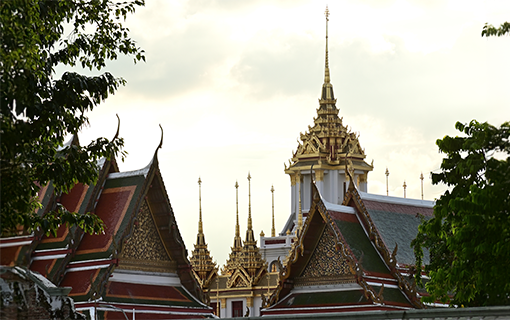
Loha Prasat of Wat Ratchanadda, Viewed from Mahatthai Uthit Bridge : A breathtaking view of the magnificent Loha Prasat at Wat Ratchanadda, as seen from Mahatthai Uthit Bridge along Boripat Road.

Phu Khao Thong (The Golden Mount) of Wat Saket at Twilight : The majestic Golden Mount of Wat Saket stands illuminated in the twilight, its golden stupa shining brightly against the dusky sky.
As you approach Wat Saket (The Golden Mount), one of Bangkok’s most revered temples, the historical charm of Boripat Road culminates. Wat Saket offers visitors a chance to explore its intricate architecture, beautiful murals, and of course, the Golden Mount itself. This temple is also the only hill in the city, where you can climb to the top and enjoy a 360-degree view of Bangkok from sunrise to sunset.
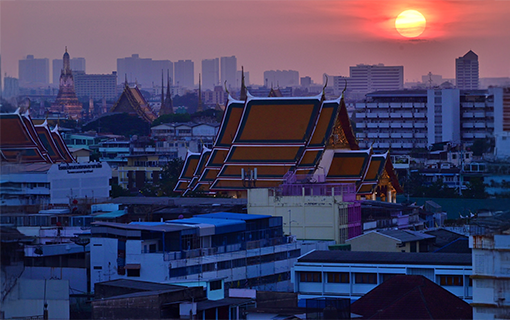
The Last Rays of Sunlight Over Bangkok, Seen from Wat Saket’s Golden Mount : As the sun sets, Bangkok’s skyline is bathed in a golden glow, offering a peaceful end to the day from the top of the Golden Mount.
For a complete experience, visit in the early morning to explore the Ban Bat community or in the late afternoon to witness the sunset from the Golden Mount, with the city skyline as a stunning backdrop.
Boripat Road, with its mix of history, culture, and religious significance, is an often-overlooked gem that’s worth exploring. Whether you're a history buff or a cultural traveler, this street offers something for everyone. Happy exploring!
Editor in Chief : Nampetch Siramanon
Editor: Pacific Leisure (Thailand)
Content Creator : Mr. Saroj Na Ayutthaya
Navigate
Terms & Privacy
Pacific Leisure (Thailand) Limited
No. 888/154, Mahatun Plaza Bldg., 15th Floor,
Ploenchit Road, Lumpini, Pathum Wan,
Bangkok 10330, Thailand
Phone : +66 22 542 966
Mobile : +66 87 347 3111, +66 63 224 1384
Email : info@pacificleisureth.com
Website : https://www.PacificLeisureTH.com
(TAT) Licensed No: 11/00161

